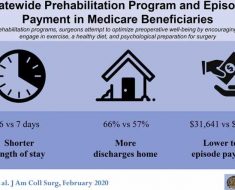Trends in mortality from leading cancers from 2002 to 2019 for the 314 districts in England
In a recent study published in The Lancet Oncology, a group of researchers assessed mortality trends in the leading cancers from 2002 to 2019 across 314 districts in England using high-resolution spatiotemporal analysis.

Background
While mortality from other major causes has decreased more rapidly in the United Kingdom (UK) and other industrialized countries, cancer-related deaths have declined more slowly, increasing the proportion of cancer fatalities over the past two decades. Cancer is now the leading cause of death in England, exceeding even cardiovascular-related deaths. Moreover, it represents one of the most pressing health issues. Mortality data commonly span wide areas, thus making it difficult for a specific area to conclude its local trends.
Nonetheless, in-depth, small-area analysis is essential when it comes to determining the locations that require primary prevention and designing health policies that will enhance survival. Further research is essential to understand and address local disparities in cancer mortality, guide targeted prevention strategies, and improve healthcare planning, particularly in the context of rising cancer deaths and persistent inequalities in health outcomes.
About the study
The present study was conducted using vital registration data from between 2002 and 2019 comprising more than 8.64 million death records in England. These records, managed by the UK Small Area Health Statistics Unit (SAHSU) at Imperial College London, were carefully categorized by sex, age, and cause of death using the International Classification of Diseases codes. Each death was assigned to one of England's 314 districts based on the deceased's postcode, ensuring precise geographical mapping.
The study avoided using 130 records with unrecorded sex and excluded ethnicity data due to its absence on death certificates and limited availability at the district level. Moreover, it relied on population estimates and income deprivation indicators from the UK Office for National Statistics, with estimated poverty levels computed using a weighted mean number of people claiming income-related benefits at the district level.
A stable death rate estimate was made based on a Bayesian hierarchical model previously used in other research. The model had data shared between different districts, age groups, and years but deliberately excluded the district-level socioeconomic variables due to unequal distribution of data and differing ways of calculations.
The primary focus was on the unconditional probability of dying from cancer between birth and 80 years, a metric chosen for its intuitive nature and equitable comparison across different areas. This probability, free from the influence of competing causes of death, was computed using life tables applied to age-specific death rates. For context, age-standardized death rates were also calculated, showing a high correlation with the primary outcome.
The study's findings were presented with 95% credible intervals, indicating the range of probable death probabilities. It also detailed the likelihood of mortality changes over time in each district, providing a nuanced view of regional trends. Furthermore, correlations between district-level cancer mortality probabilities and poverty levels in 2019 were highlighted, showcasing the relationship between socioeconomic factors and health outcomes.
Study results
Between 2002 and 2019, England recorded 2,453,173 cancer-related deaths. Of these, 62.5% occurred before the age of 80, with a slightly higher percentage in men than in women. The study noted a national decline in the probability of dying from cancer before age 80 during this period, with a decrease from 0.16 to 0.13 for women and from 0.22 to 0.17 for men.
The 2019 data showed significant geographical variations in cancer mortality. For Women, the probability ranged from 0.10 in Westminster to 0.17 in Manchester, while for Men, it ranged from 0.12 in Harrow to 0.22 in Manchester. The highest cancer mortality rates were observed in northern cities like Manchester, Hull, Liverpool, and Newcastle and coastal areas east of London.
In terms of age at death from cancer, the mean varied across cancer types. Lung cancer remained the leading cause of cancer-related deaths for both sexes, with significant geographical variation in mortality rates. The largest variations were observed in urban areas of the North West and North East.
The study also highlighted the second leading causes of cancer deaths: breast cancer in women and prostate cancer in men. Unlike lung cancer, these showed lower geographical variability in mortality rates. However, notable differences were observed in certain areas, particularly in northwest London.
Liver cancer, particularly prevalent among men, showed high mortality rates in the North West, North East, and central London. Stomach cancer also exhibited high geographical variability in mortality rates. Conversely, cancers like lymphoma, multiple myeloma, and leukemia showed the least geographical variability.
The study found correlations between the probability of dying from various cancers and poverty levels. This correlation was particularly strong for lung cancer, the leading cause of cancer death. However, for cancers like breast and prostate cancer, there was little to no association with poverty.
From 2002 to 2019, there was a general decline in cancer mortality before age 80 in every district for both sexes. However, the rate of this decline varied significantly across districts. The largest decreases were observed in London, particularly for stomach cancer.
Despite the overall decline in lung cancer mortality among men, trends among women were mixed, with significant increases observed in some districts. Similarly, pancreatic cancer mortality increased in nearly all districts for both sexes, particularly in the SouthEast region.
Lastly, liver cancer mortality in men and corpus uteri cancer mortality in women also increased, with some districts experiencing over 100% increase in liver cancer mortality. In cases where pancreatic cancer mortality increased significantly, there was often a corresponding increase in another cancer type.
-
Theo Rashid,James E Bennett,David C Muller, et al. Mortality from leading cancers in districts of England from 2002 to 2019: a population-based, spatiotemporal study, The Lancet Oncology, 2023. doi: https://doi.org/10.1016/S1470-2045(23)00530-2
https://www.thelancet.com/journals/lanonc/article/PIIS1470-2045(23)00530-2/fulltext?rss=yes#%20%22%3Ehttps://www.thelancet.com/journals/lanonc/article/PIIS1470-2045(23)00530-2/fulltext?rss=yes%23%20
Posted in: Medical Science News | Medical Research News | Medical Condition News | Disease/Infection News | Healthcare News
Tags: Breast Cancer, Cancer, Healthcare, International Classification of Diseases, Leukemia, Liver, Liver Cancer, Lung Cancer, Lymphoma, Mortality, Multiple Myeloma, Myeloma, Oncology, Pancreatic Cancer, Poverty, Prostate, Prostate Cancer, Research, Stomach, Stomach Cancer

Written by
Vijay Kumar Malesu
Vijay holds a Ph.D. in Biotechnology and possesses a deep passion for microbiology. His academic journey has allowed him to delve deeper into understanding the intricate world of microorganisms. Through his research and studies, he has gained expertise in various aspects of microbiology, which includes microbial genetics, microbial physiology, and microbial ecology. Vijay has six years of scientific research experience at renowned research institutes such as the Indian Council for Agricultural Research and KIIT University. He has worked on diverse projects in microbiology, biopolymers, and drug delivery. His contributions to these areas have provided him with a comprehensive understanding of the subject matter and the ability to tackle complex research challenges.





